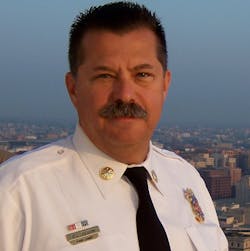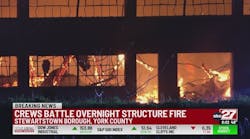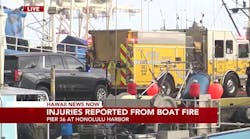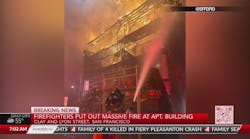In December 1978, United Airlines Flight 173 crashed: The cause was determined to be human error. Based on this disaster, the Federal Aviation Administration gave all U.S. commercial aviation carriers two years to develop a human error prevention management system. What resulted was crew resource management (CRM).
CRM focuses on all crew members making appropriate and effective decisions to ensure that human inputs are correct, from preflight checks to deplaning. It uses “challenge and confirm” decision-making to ensure that the correct decisions are made the first time and every time.
The results are remarkable, greatly reducing aviation accidents and incidents that were caused by human error.
CRM gained wide acceptance in the worldwide aviation community and the U.S. military. It has been proven statistically as well as scientifically to be tremendously effective in eliminating human errors. Perhaps it’s time for the fire and rescue service to embrace, learn from and adopt CRM. Below are two apparatus-specific examples.
(Editor’s note: Columbus, OH, Division of Fire’s Janine Curcio is convinced particularly of CRM’s applicability to EMS.)
Teamwork
When apparatus is allowed to over-speed, the likelihood of disaster looms. Both the driver and the officer who is in charge of the vehicle must agree on a safe and proper speed for the conditions. If there is a disagreement on the proper speed, the slower of the two opinions must prevail.
Although the member who is in charge of the vehicle generally sits in the right front seat (without vehicle controls), that person bears organizational responsibility for safe vehicle operation. Legally, the driver is required to keep the vehicle under control. Undoubtedly, the driver and the officer have a moral obligation to their crew, the public and their department to make sound decisions.
To emphasize the level of direct responsibility by the officer, apparatus should include a speedometer that’s installed directly in front of the officer position.
Apparatus always must operate under control and only be allowed to exceed posted speed limits slightly (but never by more than 10 miles per hour). Exceeding the posted limit only can occur when the conditions allow.
Stopping at all negative rights of way isn’t optional.
The driver and officer must agree that the vehicle is under control: Mission completion requires arriving alive.
Sterile command post
Another fire service-applicable CRM rule is the sterile cockpit: All extraneous discussion and distractions are removed from the operational areas during critical times. Cellphones, cameras, voice recorders and laptop computers shouldn’t be used during sterile cockpit times.
These restrictions must be applied in the cab of every response during operations. Communications between crew members are focused on the work at hand when nonessential discussion is avoided.
The officer may use a properly mounted and secured laptop or tablet computer to review operational details that are essential to the alarm and to size up the incident. A windshield-mounted video camera may provide training and after-action review information without being distractive. Personal cameras shouldn’t be used during response or operational times.
Under control
Perhaps Chief Alan Brunacini said it best in his textbook, “Command Safety: The IC’s Role in Protecting Firefighters”—When responding to alarms, members should exhibit a “controlled hustle” to balance incident safety with the operational need to prevent harm in the community. The focus must be on keeping the response time to the shortest duration that’s obtainable within the parameters of safe operation.
Brunacini said all fire and rescue operations “must start under control, stay under control and end under control.”
There is a tremendous amount of information about applying the CRM process to avoid poor decisions. CRM should be integrated into the incident command process as well as all facets of fire rescue operations.






